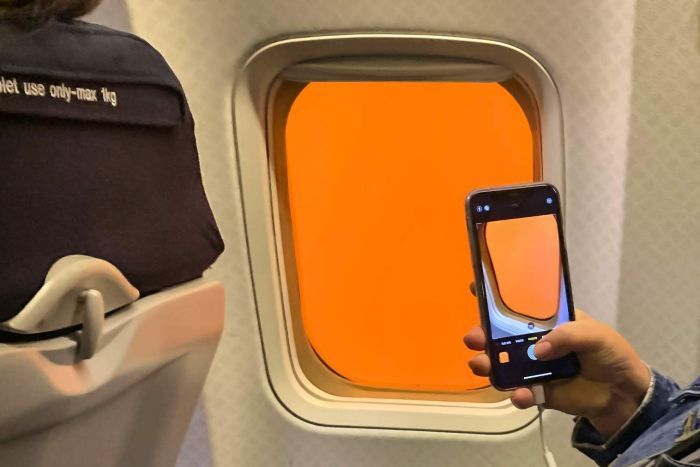
Qantas passengers have told ABC Australia of their experience flying through a fire induced weather system between Melbourne and Canberra. The flight went from daylight, to orange to pitch black in minutes.
Passenger Matt McIntyre told ABC, “It just got greyer and greyer. All of a sudden just pitch black, and that’s when the plane sort of dropped. There was one guy sort of swearing … I heard people down the front vomiting.”
Hua Tao told ABC it was the “scariest flight” he had taken. “It was orange outside of the window, then suddenly it was black, and then the turbulence hit. I was jumping off my seat!”
Mr McIntyre also told ABC, “Because it was so dark outside, it was just hard to get a gauge on exactly what was happening. It wasn’t until we got back on track that we got a voiceover from the captain. They said it just did not come up on the radar at all. One minute we were in daylight, the next, it was midnight.”
Qantas fleet safety captain Debbie Slade told ABC the pilots reacted quickly and, “The pilots ascended to a higher altitude before taking a different approach into Canberra, where the aircraft had a normal landing.”
Qantas has cancelled all flights in and out of Canberra Sunday due to smoke haze from the Australian bushfire crisis blowing into country’s capital. Virgin Australia and Singapore Airlines are still operating flights to and from the city. Smoke from the fires in NSW and Victoria have caused many businesses to close and Australia Post to suspend mail deliveries until further notice.
Pyrocumulous clouds form when heat from a fire causes hot air to rise rapidly. Turbulence causes cooler air to be drawn into the plume. As it gets into higher altitudes the plume expands due to lower atmospheric pressure and cools even further. If it cools enough it will form a cumulus cloud, which is named pyrocumulus as it was formed by fire. As the cloud condenses latent heat is released making the cloud warmer and more buoyant, causing the air in the cloud to accelerate upwards. The process repeats and can lead to the cloud reaching the lower stratosphere. Ice particle collisions create a charge leading to thunderstorms. At that stage it becomes known as a pyrocumulonimbus cloud. The lightning caused from these clouds can lead to more fires caused by the lightning strikes. The systems can also cause downbursts.